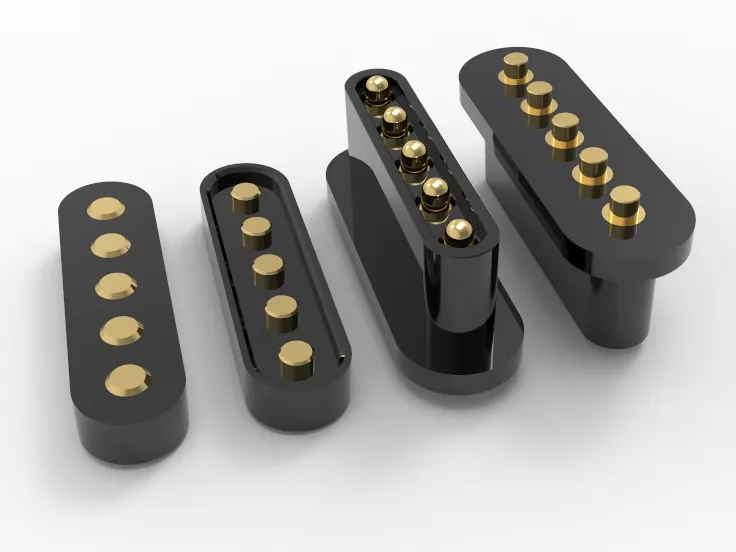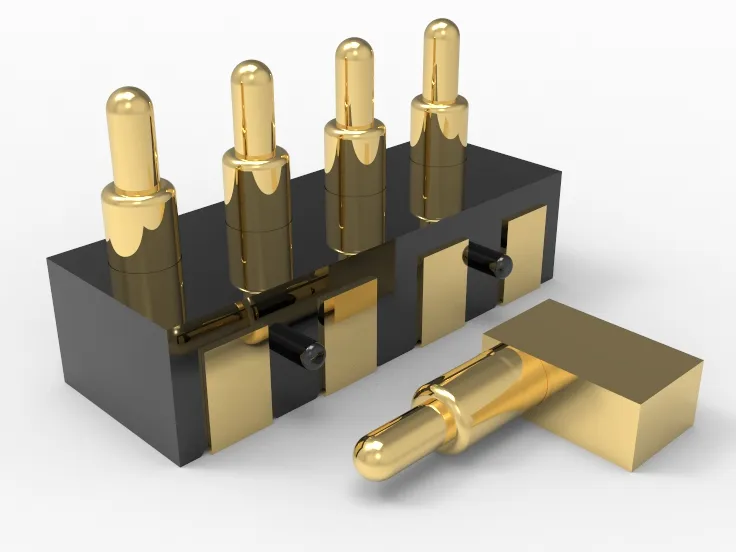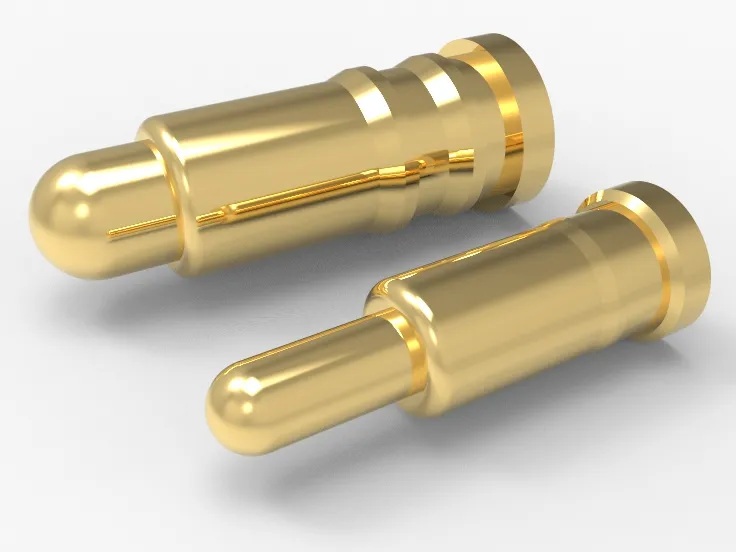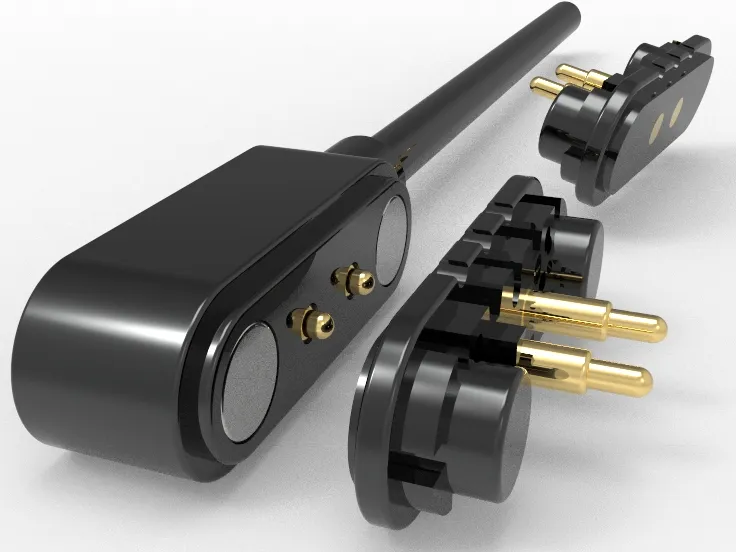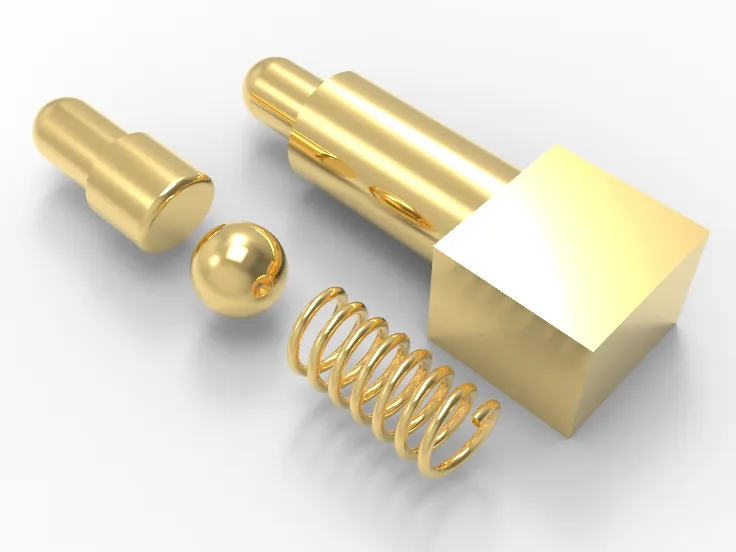What Is Soldering? How to Design Pogo Pin Connector to Prevent Damage from High-temperature Soldering and Keep the Waterproof Coating Intact
Introduction
Pogo Pin connector is popular in modern electronics due to their unique contact method. However, the high-temperature soldering process can affect these connectors, particularly their waterproof coating. How can we prevent high-temperature damage during soldering while maintaining the waterproof performance of Pogo Pin connector?
This article explores the basics of soldering and offers professional tips to help designers create Pogo Pin connector that is both heat-resistant and waterproof, suitable for harsh environments.
1. What is Soldering?
1.1 Soldering Basics for Pogo Pins
- Pin Material: Typically made from copper alloy, which offers good electrical conductivity and heat resistance. A gold-plated layer is usually added for corrosion resistance and reliable contact.
- Soldering Technique: Pogo Pins are often soldered using reflow soldering. This technique ensures even melting of solder, which guarantees strong solder joints and good electrical performance.
- Temperature Control: Precise temperature control is crucial during soldering to prevent damage. Excessive heat can cause the solder to over-melt, compromising the connector’s structure and waterproof capabilities.
1.2 Soldering Quality Check
- Solder Joint Inspection: Use a microscope to check for uniform solder joints and to identify any cold or dry solder.
- Electrical Testing: Conduct electrical tests to ensure the connector’s conductivity and resistance meet specifications.
- Waterproof Testing: For connectors requiring waterproofing, perform tests to ensure the integrity of the waterproof coating.
Soldering Pogo Pin connector involves several technical details, from material selection and soldering processes to quality checks. By optimizing these aspects, you can effectively prevent high-temperature damage and maintain the integrity of the waterproof coating, ensuring the connector’s reliability and stability in real-world applications.
2. Pogo Pin Connector Design Challenges
2.1 High-Temperature Soldering Issues:
- Coating Damage: The coating on waterproof Pogo Pin connector is heat-resistant but may degrade or peel at high soldering temperatures, reducing waterproofing. Use coatings with high-temperature stability and ensure even thickness.
- Heat Transfer: Soldering heat can transfer through the pins, affecting internal components like springs or contacts. Implement efficient thermal isolation in the design to protect these components.
- Maintaining Waterproof Seal: Soldering can soften or deform seals (like O-rings), leading to seal failure. Choose high-temperature-resistant seal materials and optimize the seal design to maintain waterproofing.
- Temperature-Induced Dimensional Changes: High temperatures can cause thermal expansion or contraction of the connector’s outer material, affecting waterproofing. Select materials with suitable thermal expansion coefficients to maintain dimensional stability.
- Physical Damage to Coating: Soldering can physically damage coatings, especially during manual or mechanical soldering. Consider adding extra coating protection or optimizing the soldering process to minimize coating contact.
2.2 Importance of Waterproof Coating:
- Essential Role: Waterproof coatings prevent moisture ingress and protect internal circuits from corrosion. They can be fragile, especially under high temperatures, so choose high-temperature, well-adhering coating materials.
- High-Temperature Soldering Challenges: Soldering temperatures can reach up to 200°C or higher, stressing the coating. Ensure soldering points are away from the coating or use thermal barriers to isolate the coating from heat.
- Process Optimization: Optimize coating application processes, such as applying critical waterproof coatings after soldering, to avoid direct heat impact.
- Material Selection and Testing: Select materials with excellent heat resistance and waterproof properties. Conduct extensive testing on materials, including after high-temperature soldering, to ensure coating reliability.
3. Strategies for Designing Waterproof Pogo Pin Connector
Designing Pogo Pin connector that withstands high-temperature soldering while maintaining waterproof integrity is a critical challenge. Here are some concise strategies based on high-traffic Google keywords:
3.1 Material Selection
- Choose high-temperature, corrosion-resistant alloys like copper or stainless steel for the Pogo Pins. These materials maintain structural strength under heat and minimize deformation and damage during soldering.
3.2 Waterproof Coating
- Use PTFE (Teflon) or Parylene for the waterproof coating due to their excellent chemical and heat resistance. Apply multiple coating layers with protective interlayers to enhance durability and coating integrity.
3.3 Soldering Process Optimization
- Control soldering temperature precisely using advanced methods like laser or pulse welding to minimize thermal impact on Pogo Pins and coatings. Implement gradual heating and cooling to avoid material stress and damage.
3.4 Structural Design Improvement
- Optimize connector design to disperse heat away from the soldering area. Adding heat sinks or thermal conduits helps manage localized heat, and refining the connector’s geometry reduces stress and protects the coating.
3.5 Post-Soldering Protection
- Apply a secondary protective coating like waterproof sealants after soldering to address any minor cracks and further enhance waterproof performance.
3.6 Quality Control and Testing
- Employ non-destructive testing methods such as X-ray or ultrasonic inspections to detect potential defects after soldering, ensuring that each Pogo Pin connector meets waterproof and high-temperature standards.
These strategies help ensure that Pogo Pin connector maintains its waterproof coating and reliability even under harsh conditions. Adapt these guidelines as needed for specific applications to achieve optimal performance.
4. Success Case Study
4.1 Challenges with Soldering and Waterproof Coatings
- During high-temperature soldering, the waterproof coating on Pogo Pin connector can soften, peel off, or crack, losing its effectiveness. This reduces connector reliability and can lead to device failure. Therefore, protecting the waterproof coating during high-temperature soldering is a key design challenge.
4.2 Successful Design Improvements
When designing an outdoor Pogo Pin connector for a major electronics manufacturer, we faced issues with coating damage during soldering. The CFT engineering team implemented the following improvements:
- 4.2.1 Material Upgrade: We used a high-temperature resistant waterproof coating material that withstands up to 300°C and has strong adhesion, maintaining integrity after soldering.
- 4.2.2 Coating Thickness Optimization: Precise control of coating thickness ensured waterproof performance while preventing overheating issues during soldering.
- 4.2.3 Soldering Process Improvement: We adopted pulse soldering technology with short high-temperature pulses to minimize heat damage to the coating and added cooling measures near the soldering points to speed up the cooling process.
- 4.2.4 Multi-layer Protection Design: An additional protective layer was added over the waterproof coating to absorb some heat during soldering and reduce temperature impact on the coating.
Results
These design improvements enabled the Pogo Pin connector to pass multiple high-temperature soldering tests, with the waterproof coating remaining intact. The connector is now widely used in high-humidity and high-temperature environments, such as outdoor surveillance systems and industrial automation, significantly enhancing product reliability and lifespan.




